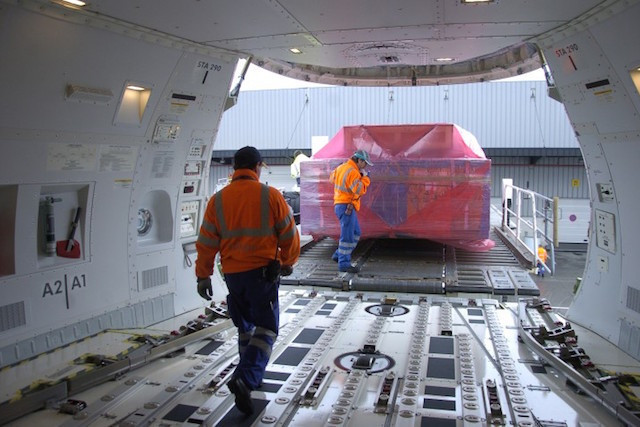Lack of capacity, longer flight routes, more expensive fuel and increased need for crew--the air freight sector is forced to adapt to many new constraints, meaning its own prices are rising, which will ultimately be borne by the end consumer.
“There are many factors that explain the tension in the air freight market,” says Nicolas Simons, CEO of EZ Cargo, an air freight broker based at Liège Airport. The most important one is the lack of capacity of the airlines. “AirBridgeCargo, a Russian cargo airline, can no longer fly to Europe. It had significant capacity leaving Frankfurt, Paris and Liège. So, first of all, we have to find space with other airlines to transport the goods that AirBridgeCargo was supposed to carry, when the market is already tight,” he points out.
Airlines use more fuel and they have to load more fuel. So they have less weight for their goods
In February, China’s freight infrastructure traditionally slows down for 8-10 days due to Chinese New Year, before picking up the pace in the following days to make up for the backlog of goods.
Another difficulty is the closure of Russian airspace to Western airlines. To reach China, the Russian sky is the shortest route. Now, airlines have to fly around Russia and burn more fuel.
According to Eurocontrol, a plane has to fly an extra 1,582 kilometres (855 nautical miles) from Amsterdam to Beijing without passing through Russia. This means an extra 105 minutes. A longer route and flight time means more fuel consumption. Like all petroleum products, the price of kerosene is also on the rise. “Airlines are taking the southern route, via Baku and Dubai depending on the price of paraffin, to reach China. This is not the shortest route. So the airlines use more fuel and they have to load more fuel. So they have less weight for their goods. But there is a very strong demand for volume,” says Simons.
Today, the price is around €5 per kilo.
To add more complexity to the situation, China still imposes major health restrictions on the crews of cargo planes, forcing companies to adapt accordingly. “China is still on fairly high alert when it comes to covid-19. Before, airlines would stop at the Russian airport in Novosibirsk to change crews, meet flight times and avoid quarantines at Chinese airports. Today, this is no longer possible and airlines have to adapt routes, flights, or even sometimes have a double crew on board. But the airline market is already experiencing difficulties in finding crews. Airline planning has therefore become complicated in recent days,” says Simons.
In the end, all these constraints weigh on the price of transport. “When the closure of Russian airspace was announced, the price doubled or even tripled,” says the Liège-based broker. “Before the Russian invasion of Ukraine, prices were around €2.5 per kilo on direct flights from China. If you went through smaller airports in China, you could find €1.30 per kilo,” he says, before adding: “Today, you have to count on around €5 per kilo. Just four years ago, a kilo was between €0.30 and €0.60 in air freight.”
Read also
Strong demand
“There is an economic recovery and demand is strong. The market is under high tension with the law of supply and demand that is ultimately very simple. Whoever pays sees his goods being loaded onto the plane. This is not always easy, because for the customer who has a budget of €10,000 for the transport of his goods and who must finally pay €25,000, his goods have not changed in value. So this customer will pass on this price later on, and it is often the end consumer who will bear the burden,” Simons says.
In terms of goods, the most common items transported are perishable goods and pharmaceuticals. “For these types of products, there is no alternative to air transport. For industrial products, the choice will be made according to late arrival fines. The customer will calculate the amount of the penalty if his goods are transported by ship and arrive one month late. If it is more advantageous, the goods will go in a container. If not, it will go in a cargo plane,” the broker concludes.
But here again, ships and containers are also under strain and unloading times are very long. On the rail side, the train linking Europe to Asia passes through Belarus.
Fuel: 25.6% of Cargolux’s costs
In Luxembourg, a company like Cargolux is not immune to the disruptions in the air freight sector. Especially since the Luxembourg airline regularly operates flights to Zhengzhou in China. Boeing 747s can also be seen flying south of Russia to Baku or Dubai on their way to Asia.
When asked about the consequences of the whole thing on its business, Cargolux only stressed that it is “taking the necessary measures to comply with the restrictions imposed”.
In its 2020 annual report, it is stated that fuel expenditure accounted for 25.6% of operational costs.
This story was first published in French on . It has been translated and edited for Delano.


